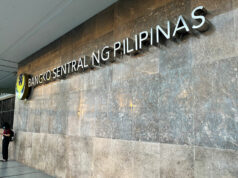Stimulus package for the tourism sector
In recent years, the Philippine economy has relied on three major pillars of growth: the remittances of overseas Filipino workers (OFW), the business process outsourcing (BPO) industry, and the tourism sector. Of the three, only the BPOs have survived the pandemic since many OFWs lost their jobs while the airlines and hospitality establishments are on the brink of collapse.
What a difference a year makes. In 2019, the Philippines recorded an all-time high of 8.3 million international tourist arrivals reflecting a 15.2% increase from the year-ago level of 7.16 million based on statistics from the Department of Tourism (DoT).
Domestic tourists already numbered 111 million in 2018, surpassing the 2022 target of 89 million as projected by the DoT’s National Tourism Development Plan (NTDP). That year, some 8.4 million jobs were directly and indirectly supported by the travel industry, accounting for almost 20% of total employment in the country.
But the pandemic brought massive devastation to global tourism this year, and the NTDP projection of 12 million foreign tourist arrivals by 2022 is unattainable. In a DoT study titled “Insights on Filipino Travel Behavior Post-COVID-19,” the results showed that domestic leisure travel is expected to lead the recovery of Philippine tourism in the new normal.
The Senate and the House of Representatives recently ratified the consolidated version of the Bayanihan to Recover as One Act or “Bayanihan II” bill. During the bicameral conference committee deliberations, legislators from the two chambers of Congress agreed to allocate P10 billion for the ailing travel and tourism industry but they differed in terms of which agency would implement the rescue package. For the lower house, it should go to the Tourism Infrastructure and Enterprise Zone Authority (TIEZA), while the upper house preferred to let the DoT handle the stimulus budget.
After heated debates, they compromised to lodge P6 billion with the Department of Trade and Industry’s Small Business Corp. as loanable funds for micro, small, and medium enterprises (MSMEs) in the travel sector. Another P3 billion was assigned to the Department of Labor and Employment for financial assistance to displaced tourism industry workers, with the remaining P1 billion given to the Department of Public Works and Highways for tourism infrastructure projects.
Senator Franklin Drilon led the Senate contingent in opposing the allotment of the entire P10 billion to TIEZA. In a media interview, he said: “House lawmakers wanted to allocate the funds for the construction of toilets and roads, while the Senate fought hard to defend the position of the DoT that the funds be appropriated as cash aid through soft loans.”
Strangely, Drilon lumped the proposed TIEZA projects together under toilets and roads. For someone who endorsed the P8.8 billion Iloilo International Airport and the P800 million Iloilo Convention Center (ICC), he seems to have developed a simplistic view of tourism infrastructure lately. Among the TIEZA board’s approved plans for Drilon’s hometown are the restoration of three public plazas in Iloilo City, the construction of a tourism information center at the Iloilo River Esplanade, and improvements on the ICC.
As a veteran legislator, Drilon should be more sensitive to the needs of island destinations across the archipelago that have infrastructure gaps limiting the overall tourist experience as well as the competitiveness of these sites and their attractiveness to investors. His home province is the prime example where an exponential growth in foreign and domestic tourism resulted from big-ticket construction projects that translated into jobs and investments.
Yet he supported the position of large companies who clamored for direct aid to their declining businesses — in other words, a bailout. Instead of being distributed equitably to MSMEs and ordinary tourism workers, public funds might be cornered by these big players to the disadvantage of the small fry.
With or without the Bayanihan 2 bill, industry recovery must happen soon to break the current impasse. For instance, the Hotel Sales and Marketing Association (HSMA) Philippines is set to launch an online travel mart next month. Dubbed SOS or “September Online Sale,” it will offer huge discounts from participating HSMA member-hotels.
Air Asia, Cebu Pacific, and Philippine Airlines are also doing their part by offering low fare deals. The state-run Civil Aeronautics Board has suspended the passenger fuel surcharge on domestic and international flights in a bid to restart the local aviation industry.
Such efforts from both the private and public sectors could energize demand in the near-term and provide relief to tourism-related businesses until the industry returns to normalcy. Thus, it is imperative for stakeholders to draw up a holistic and comprehensive plan that will resuscitate this vital pillar of our economy.
J. Albert Gamboa is the CFO of Asian Center for Legal Excellence and Chairman of FINEX Publications.



